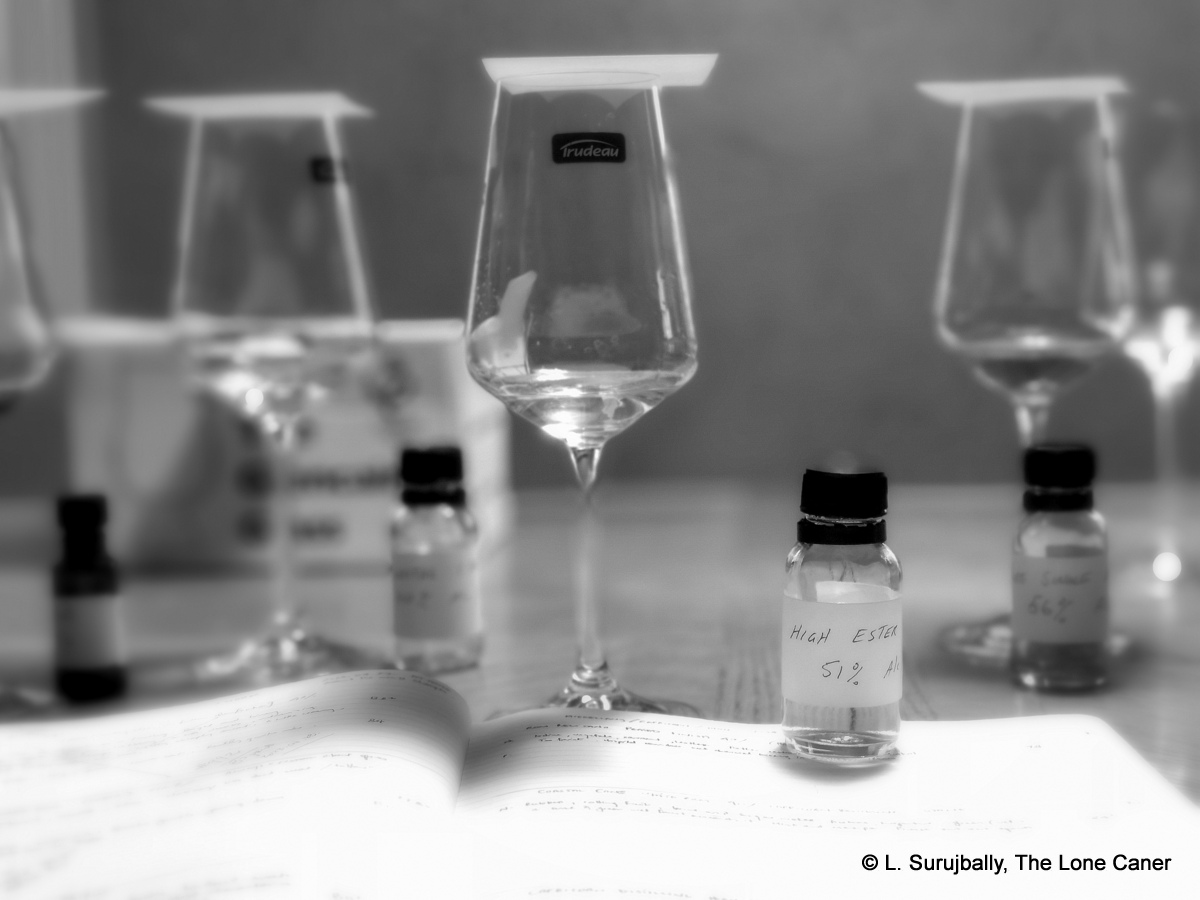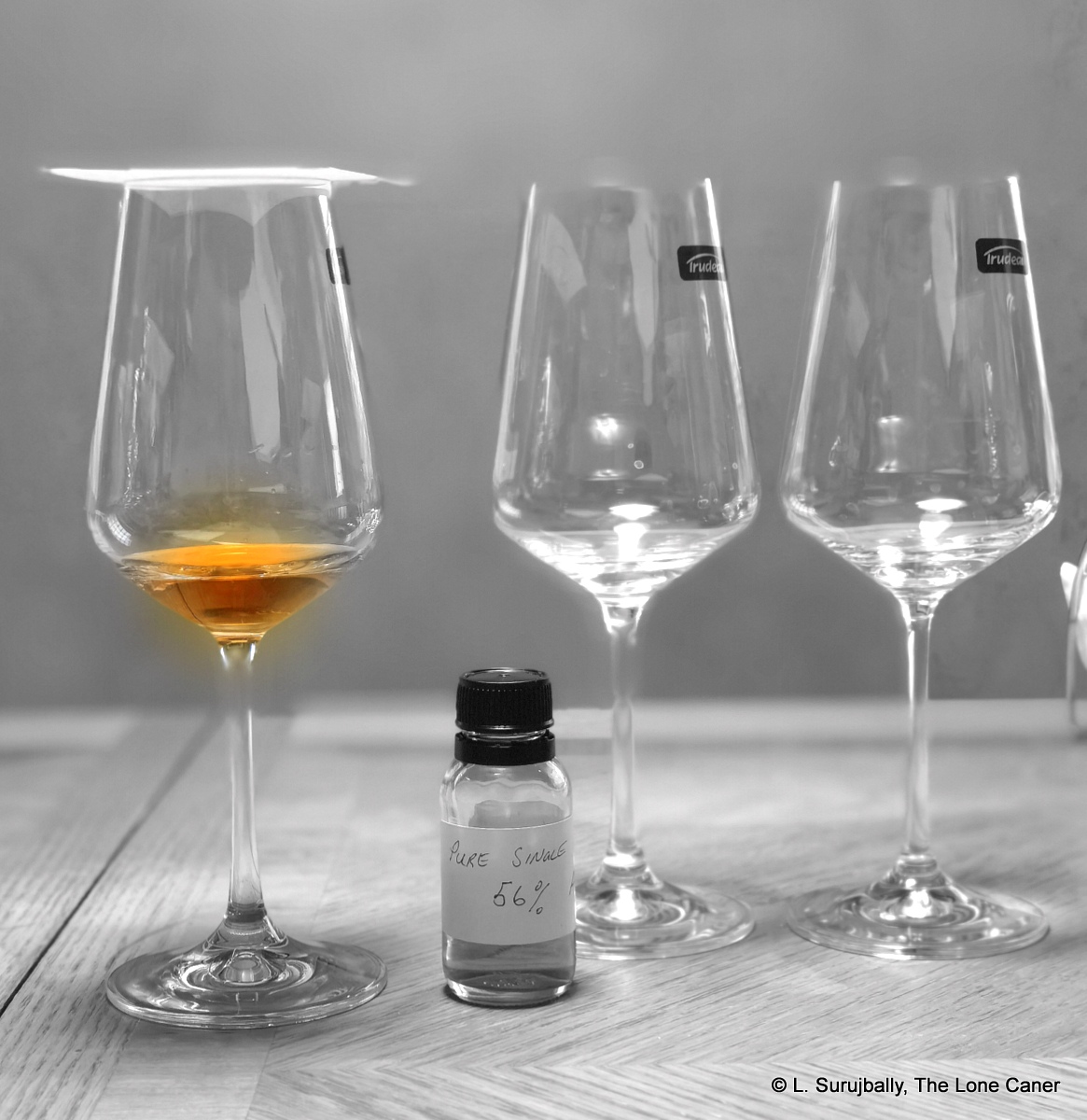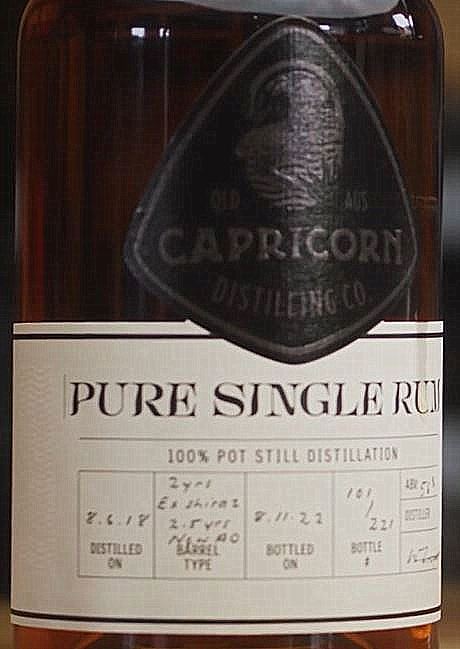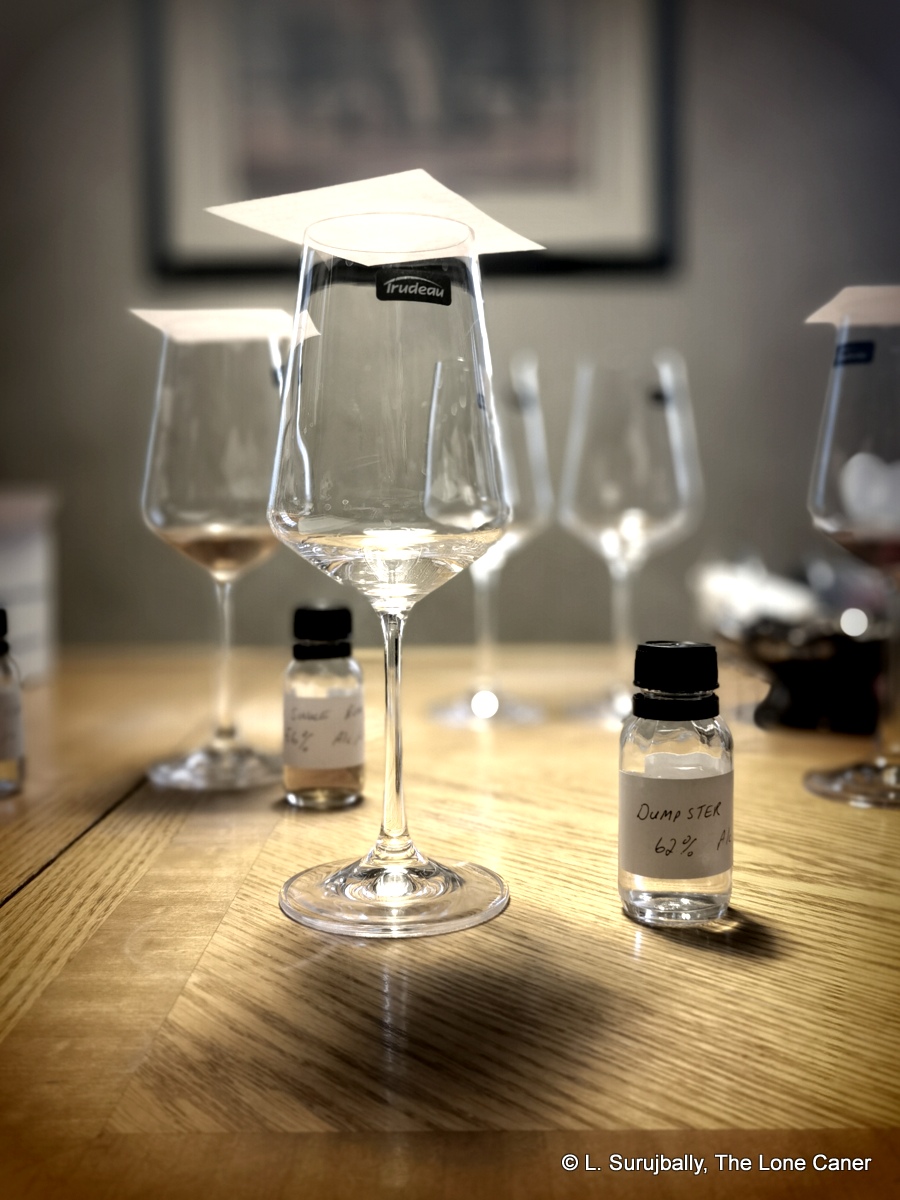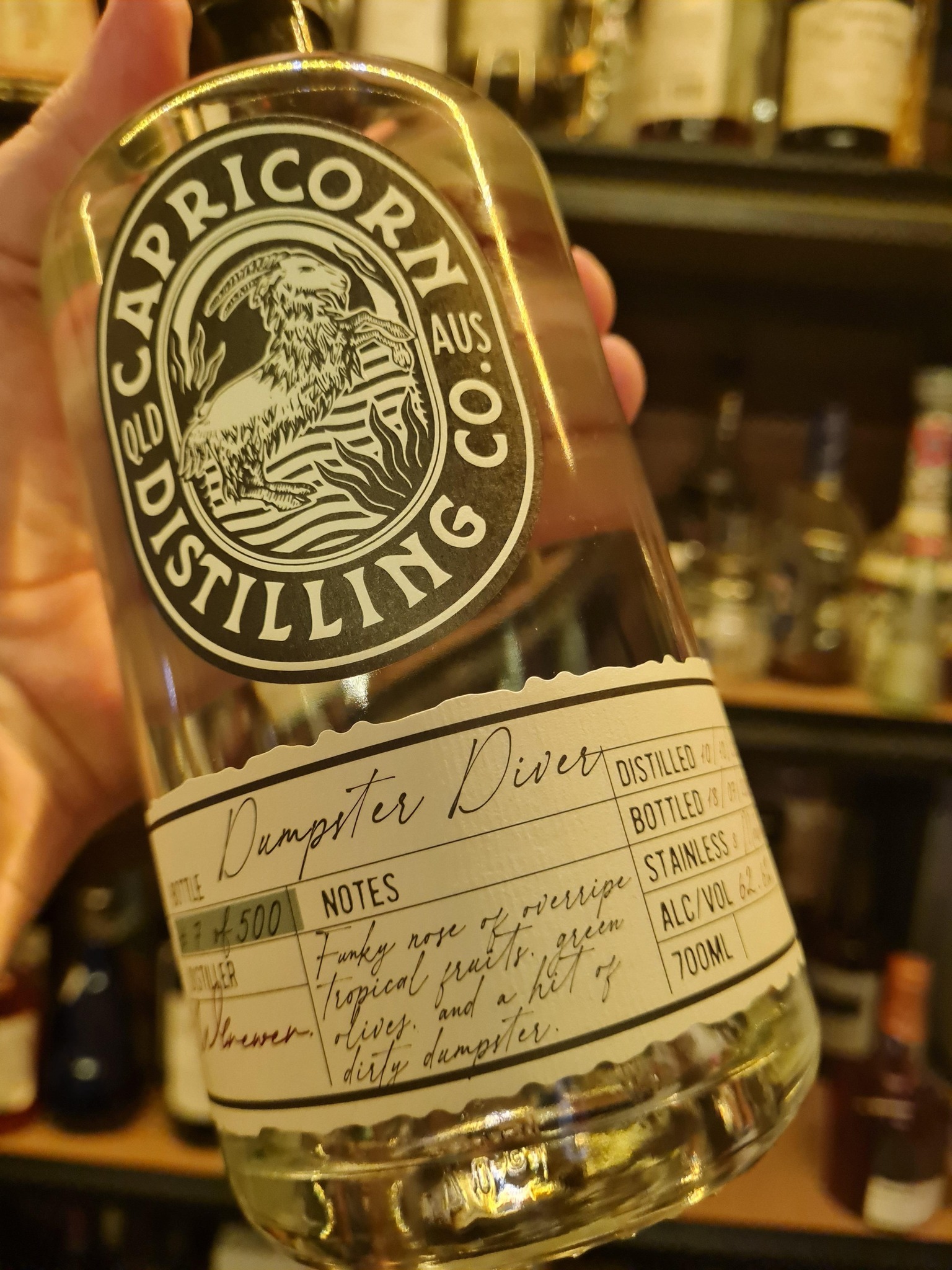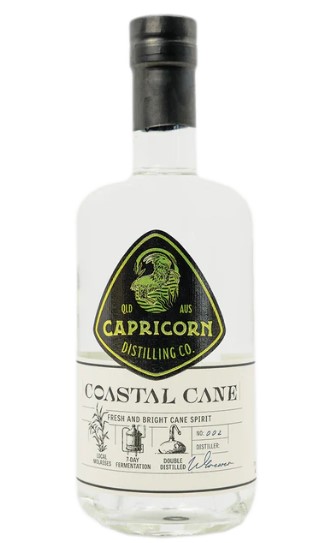Almost all of Capricorn Distilling’s current line up of releases are good ones, and they haven’t even started a serious ageing program yet. Whether this is a matter of their desire to tinker and see what happens, or a clearly thought-out distillation philosophy, is unknown to me. What I do know, is that having tried their standard range (not the spiced, infused, gins, liqueurs or anything else) I can honestly state that if you get a white unaged Australian rum this year, you could do worse than buy a case of their juice generally – and the High Ester in particular. Because that thing is damned good: it channels Jamaica by way of Reunion, adds a measure of outback attitude, and sports serious rum making mojo on all levels.
It’s on par with the overproofs of Black Gate or Killik (especially the latter’s Silver) in my estimation, and indeed it shares some of those rums’ DNA: molasses-based based, a 10-15 day fermentation using a different yeast from the Coastal Cane, some dunder for kick (and maybe a diced dingo or two, who knows? — with Warren, you get the impression that anything is possible). Then there’s a single pass-through on Rocky (the double retort pot still), after which it’s left to rest for a while and diluted down to 51% before bottling.
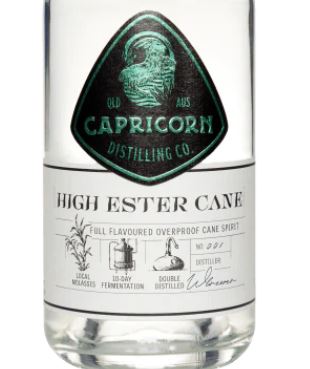 If that sounds interesting, wait until you nose it, because while it’s not quite as well rounded as the Pure Single Rum, it’s hot, it’s spicy, it’s clean as new steel, and really crisp. There’s a sense of sparkling wine about it – chianti, Riesling, plus some 7up, and pineapples. Lemony cumin, ginger, florals, cinnamon, which slowly merges with a damper aroma of rain on hot clay bricks and then softens into coconut shavings, oatmeal cookies and white chocolate crusted with almonds. The clear metallic sweat of someone who’s been exerting themselves in very cold weather after just having had a bath (yeah, I know how barmy that sounds). Juicy and ripe white fruits – papaya, guavas, pears, green apples and a few slices of pineapple. This is clearly a rum that enjoys Christmas.
If that sounds interesting, wait until you nose it, because while it’s not quite as well rounded as the Pure Single Rum, it’s hot, it’s spicy, it’s clean as new steel, and really crisp. There’s a sense of sparkling wine about it – chianti, Riesling, plus some 7up, and pineapples. Lemony cumin, ginger, florals, cinnamon, which slowly merges with a damper aroma of rain on hot clay bricks and then softens into coconut shavings, oatmeal cookies and white chocolate crusted with almonds. The clear metallic sweat of someone who’s been exerting themselves in very cold weather after just having had a bath (yeah, I know how barmy that sounds). Juicy and ripe white fruits – papaya, guavas, pears, green apples and a few slices of pineapple. This is clearly a rum that enjoys Christmas.
The palate is somewhat more subdued, while still professing a certain originality. First there’s that clean scent of fresh laundry hot from the drier, followed by a sweet, tart, yoghurt, and citrus-y hints of ripe fruits that have not yet started to go. What distinguishes the taste is the way the sour miso soup or kimchi comes out swinging here, as does a kind of sweet-salt tartness of, say, pickled tomatoes and bell peppers (with a reaper thrown in for good measure). Added to that are notes of pine, cinnamon, licorice, ginger, wet sawdust, fruits…it just keeps chugging along, one taste after another. This one rum packs a lot in its jock and isn’t afraid to sport it, right down to the aromatic, long, dry, fruity and crisp finish that immediately encourages another pour.
I’ll be the first to admit that it’s occasionally hit and miss (that’s why I tried it multiple times), and the crisp sourness mixed with sweet and salt won’t be to everyone’s taste. And indeed, Wally told me that his own team liked the Pure Single Rum best; my friend and tasting chum Logan also felt it lagged (slightly) behind the Pure Single and even the Coastal Cane.
I completely get that, because they are good rums in their own right, and I’ve reviewed them with genuine affection, scored them well. But for my money, those — while excellent in their own pitch — don’t break new ground with quite the same in-yer-face insouciance, don’t get hit outside the boundary, and remain satisfied with a solid bouncy four into deep fine leg. The High Ester Cane, in contrast, appeals to my love of the original, the offbeat, the new, and has no hesitation going for a powerful, lofty out-of-the-park six. It walks up to your wicket, hits you over the head and drags you off the field, and, love it or like it or hate it, you’ll always know you’ve had something different that day. That’s not a compliment in everyone’s book, but it sure is in mine.
(#1043)(87/100) ⭐⭐⭐⭐
Other notes
- My fellow Calgarian reviewer, friend and redditor, FarDefinition2, as well as another redditor FrostyThought8591 both felt the High Ester was not quite as good as the Pure Single or the Coastal Cane, but both agreed it would shine in cocktails. This is why sharing samples around and checking for feedback is so useful – it not only gives consumers another opinion, it also forces me to consider other points of view.
Company background (from Review #1029)
Capricorn Distilling’s origins date back to 2015 or so when Warren Brewer began distilling in his backyard with friends, using an 80-litre still from Spain (where he got it from is anyone’s guess). He released his first batch of premium rum in 2016 by which time he and five friends had bought the Saleyards motel in Rockhampton (the distillery was pushed into the pub and the idea was to use each line of business – motel, pub, restaurant, distillery – to provide a fuller experience for patrons), which is 650km north of Brisbane. This establishment is closed now and larger premises acquired in 2020 in the south of Queensland (in Burleigh Head on the Gold Coast, which is south of Brisbane and a mere stone’s thrown from the state border with NSW). Now the Saleyard company website redirects to Capricorn, but for a while in early 2021 both locations operated at the same time. From the beginning, it seems was rum was Brewer’s thing and indeed, his Capricorn Spiced Rum copped the top prize at the 2020 World Rum Awards.
The distillery doesn’t stray too far away from the standard outputs we have observed in other small and newly-established companies: its stable of releases encompasses spiced and infused and flavoured rums, a liqueur, the unaged Coastal Cane, the High Ester rum and some experimentals we’ll talk about at some point; also Ready To Drink cans, and, of course, the ever-present cash flow generator of gins. The company runs two pot stills: one is a single retort copper pot still called “Burleigh”, the other a double called “Rocky” made in NSW.
